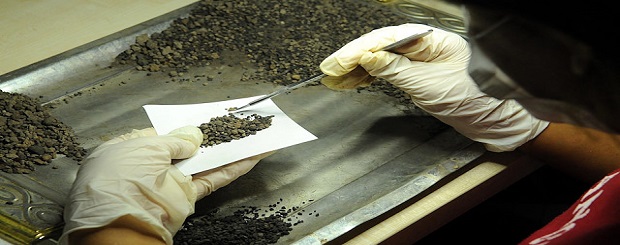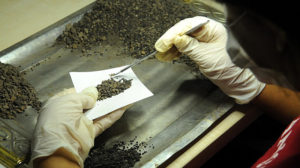
Bingöl (Byurakn-‘Akunq ’) news: 3,000 years old wheat found in Norik Höyük
2019/10 / 01- ARMENIA’S ARCHEOLOGICAL HERITAGE, WEST ARMENIA TODAY, NEWS:
Rescue excavations started last year in Norik Höyük in Murat village of Solhan district under the leadership of General Directorate of Cultural Heritage and Museums of Ministry of Culture and Tourism continue with the participation of experts from Fırat, Van Yüzüncü Yıl and Bingöl universities.
The excavation was conducted by a team of 158 people, headed by Ziya Kilinc, Director of the Elazig Museum. In addition to numerous artifacts from the Urartian and Byzantine periods, a quantity of wheat from 3,000 years ago was found in a pot.
Wheat grains from 3,000 years ago.
Evidence that people cultivated 3,000 years ago

Fırat University, Faculty of Humanities and Social Sciences, Head of the Department of Archeology. Professor Abdulkadir Ozdemir, said in a statement, rescue excavations at the mound Norik Höyük’taki Urartu period of wheat grains that they think may shed light on the past, he said.
Özdemir explained how local people live here, which animals they feed and which agricultural products they use for the benefit of history and science.
Nor During the rescue excavations carried out by Murat Norik 2 Höyük under the presidency of our Museum Director Ziya Kilinc, Elazig Museum found carbonized grain grains in a single handle pot inside the architectural structure of the Iron Age. This is the best proof that people cultivated nearly 3,000 years ago. Whether it is a wild or cultivated seed will become clear after laboratory analysis. Çalış
Wheat grains thought to be from the Urartian period can shed light on the past.
Type of wheat grains will be determined
Özdemir said that the findings obtained in the excavations were very much drawn back to the history of Bingöl, and that he would be sent to Hacettepe University to determine the type of wheat grains and to be sent to a laboratory in the United States for aging.
After the wheat grains are separated from the soil by experts, they will be sent to the laboratory for examination.
Rescue excavations carried out for two years in the settlement area of approximately 3 thousand 600 years ago and many artifacts belonging to the Urartu and Byzantine periods were unearthed.
New Dawn
akunq.net/tr/?p=55066
